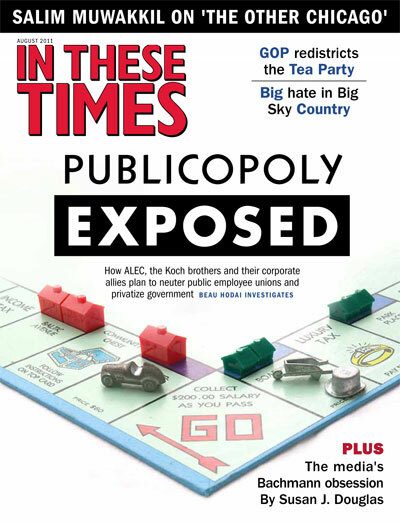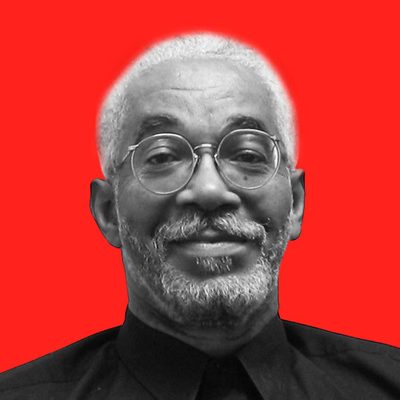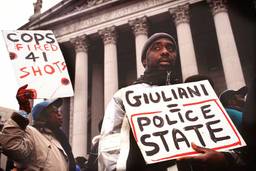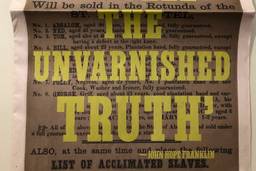Black Chicago Divided
Class and generational conflicts intensify, as African Americans cope with the Great Recession.
Salim Muwakkil
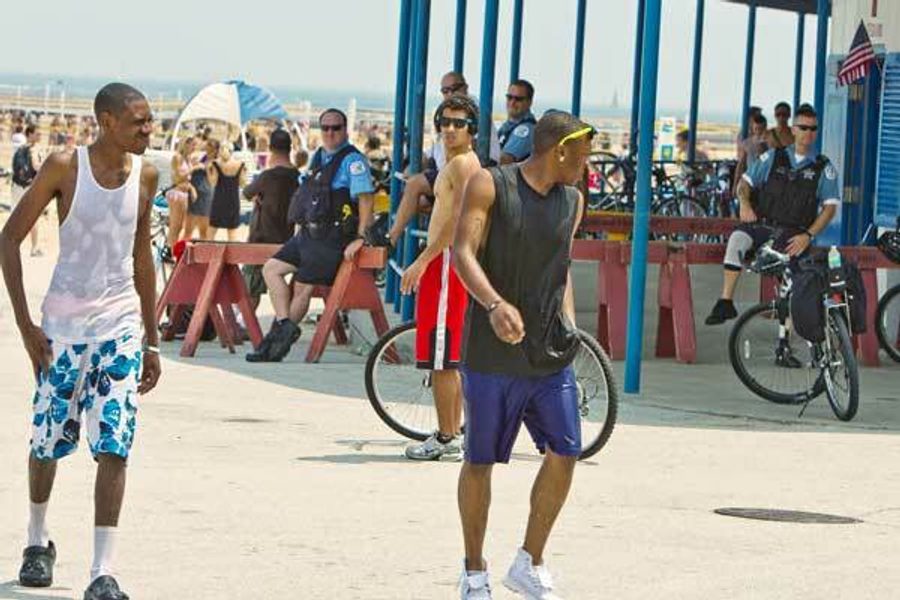
Martavius (Mark) Carter is both the product and perpetrator of a growing class divide in black America. He is a resident of Chicago’s distressed North Lawndale neighborhood and a founding member of the Voice of the Ex-Offender (VOTE), a group created to empower black people who were once imprisoned. The group’s approach is based on a protest model of direct action, and they intend to be a disruptive force.
“We are living in an emergency situation and time is out for the kind of quiet diplomacy that has been so ineffective,” says Carter, as he points out the numerous signs of decay in his West Side neighborhood.
According to the Illinois Department of Corrections, North Lawndale ranks highest in the state for its number of returning prisoners. The North Lawndale Employment Network estimates that more than 70 percent of all North Lawndale men between the ages of 18 and 45 have a criminal record, a figure almost three times higher than the national average for the same demographic. Sharon Dixon, the former alderman of the 24th Ward, which includes North Lawndale, says the community has the state’s highest homicide rate and the third-highest overall crime rate.
This neighborhood, together with adjacent West Side communities like East and West Garfield Park, Humboldt Park and Austin, has a 52-percent youth unemployment rate – the highest in the entire nation.
Upon his release from prison in 1998 (he served five years for selling drugs), Carter was outraged by the deteriorating conditions in his community. Years of what he says were useless appeals to “members of the black leadership elite” convinced him these were the same people helping to accelerate the decay. In 2003, Carter, several other ex-offenders and a few community activists created VOTE.
“When we began the struggle for community development, we kept running into roadblocks set up by the very people who were supposed to be helping us,” he says. “We began to realize that the death and destruction in our community could not have happened without the black leadership elite’s cooperation.”
Old and intensifying divisions
For most of African-American history, class divisions (forged during centuries of slavery, when slaveowners were happy to divide the loyalties of their chattel) have bedeviled attempts to unify the black community around a common strategy. In black Chicago, these tensions have smoldered for many years, flaring occasionally. Out of sight of mainstream media, divergent class interests have largely prevented any unified political attempt to wrest power from the city’s entrenched ethnic fiefdoms. Though tensions exist in black neighborhoods across the city, the contrast between the poor West Side and the better-off South Side has become a crude geographical surrogate for black Chicago’s stark class divisions.
Acutely aware of disparities among the city’s African Americans, VOTE aims its protests at the city’s established black leadership. The group is best known for raucous demonstrations at construction sites and for disrupting meetings of black elected officials and leaders. For example, VOTE was a regular presence outside the headquarters of the Rev. Jesse Jackson’s Rainbow/PUSH Coalition, protesting during Saturday meetings.
Carter has become an implacable critic of the generation of leaders that holds sway over Chicago’s civil rights community. He is also a vocal opponent of most black elected officials who, he charges, make superficial efforts at community improvement in order to garner publicity that will aid their prospects for re-election. When asked why he targets black officials and civil rights leaders rather than the traditional evils of racism and official neglect, Carter insists that unmasking them as collaborators smoothes the road toward true equality. “As long as we think they have the community’s interest at heart, we’ll continue being disappointed.”
The group’s modus operandi has earned them considerable criticism from other activist groups. “I’m not sure anger and hostility is the best way to convince people,” argues Mark Allen, a former aide to the Rev. Jesse Jackson who is associate editor of the South Street Journal and spokesperson for the National Black Wall Street Movement. “Angry denunciations tend to alienate people more than bring them together in productive relationships.”
But Carter argues that he is only channeling the anger he hears in the streets of North Lawndale and other neighborhoods suffering from acute joblessness, endemic homelessness and rampant police brutality.
Only if black leaders are shocked out of their complacency will things change, Carter insists. He is convinced that churches, businesses, fraternal groups, civic and social service organizations, and other established black institutions could more effectively plan strategies and marshal their collective wherewithal and resources to better serve the community. They don’t do this, he believes, because they have their own class interest at heart.
One example of this, noted by Carter, is how Section 3 of the Housing and Urban Development Act of 1968 is regularly violated with the complicity of black leadership. The clause was designed to ensure that “employment and other economic opportunities generated by HUD assistance or HUD assisted projects … be directed to low- and very low-income persons.” Carter says that if that law was put into practice it would go a long way toward easing unemployment in North Lawndale. “But project labor agreements, negotiated by black leaders and labor unions, allow organized labor to escape compliance with Section 3.” As a thank-you, the unions fund these civil rights organizations and black trade associations, he says.
“The black elite are playing with fire if they think they can keep fooling the masses of black people with their deceptive rhetoric,” he says. “Things are getting hot out here and pretty soon that heat is going to light some fuses.”
‘They treat us like a different race’
Some of those fuses are exploding, according to Carter, in the form of what the media is calling “flash mobs”: large groupings of young people committing robberies and assaults in more affluent parts of the city. “What you’re seeing is the poverty and despair of our broken-down communities trickling over into downtown,” he says. “Many of these kids are the children of the crack epidemic of the ’90s.”
Phillip Jackson agrees with Carter’s description and adds some substance to the VOTE leader’s condemnation of middle-class impotence. “They have been failed by their schools, and by social and faith organizations in their communities.” Jackson is founder and executive director of The Black Star Project, a highly regarded nonprofit organization that provides academic assistance to black students from pre-school to college. He is on the front line, dealing with the consequences of the economic neglect Carter targets.
“The kind of havoc they wreak among us through ‘flash mobbing’ is the kind of havoc they have lived with their entire young lives,” Jackson says.
Jamal Foster’s story is an example of what Carter and Jackson mean. Foster says he and his friends often travel to North Avenue and Oak Street Beach – two popular lakefront locations along the Gold Coast – to intimidate people and steal whatever they can. “We can get some good stuff down there,” the 17-year-old says. “You can’t get no iPods or nothing like that on the West Side. So we go to where you can and when we mob up, even the cops can’t stop us.”
Law enforcement’s impotence in halting such crimes – more than a dozen incidents in the first weeks of June alone – is the probable reason Chicago police took the unprecedented action of closing the densely crowded North Avenue Beach on Memorial Day. (The official reason given for the shutdown was to allow medical vehicles access to treat several heat-related injuries.)
On the day the cops shut down North Avenue Beach, 22-year-old Aeyanuna Rogers, a Northern Illinois University graduate, was shot in the head while on a South Side walkway just a stone’s throw from the city’s renowned Museum of Science and Industry (she died one day later). Newly elected Mayor Rahm Emanuel has pledged to relentlessly pursue those responsible. Police said they have made more than 20 arrests connected to the crimes – all African Americans.
Emanuel has promised to implement a new policing system that redeploys 150 officers to the areas of most need, and observers already notice an increase in police presence in the Gold Coast, a neighborhood close to the flash-mobbed North Avenue beach.
Some black organizations are dubious of these changes and complain the mayor is taking such aggressive action only because most of the victims are white. The areas most in need, they argue, are those crime-ravaged communities on the South and West sides. “If it’s black-on-black crime, nobody cares,” says Tonia Rush, the mother of one of the black teenagers arrested for flash mobbing.
That assessment is widely shared in black Chicago. For some, the perceived disparity requires them to adopt a more aggressive attitude toward community crime. They are pushing Illinois to pass the conceal carry law that would allow residents to pack firearms.
“Why is this state so intent on keeping us unarmed and so vulnerable?” asked Gerald Vernon, a black nationalist activist and one of the more articulate black advocates of the conceal carry legislation. Vernon argues that black people could better address the problem of crime if they were armed.
His views are shared by those black Chicagoans who increasingly argue that more aggressive action should be taken to stem the rise of criminal behavior. I am personally aware of one particular group that openly expresses vigilante aims. These mostly middle-aged working class black men (and one woman), all of whom requested anonymity, pepper their conversations with angry censure of “pants-sagging thugs,” and talk boldly of taking the fight to them.
These views of aggressive vigilantism reflect Carter’s predictions of erupting anger and frustration between the classes. He said the animosity is so strong the black middle-class seems to regard ex-offenders and other low-income African Americans as another race altogether. “In Africa, I suppose they would say different tribes, but here they treat us like a different race.” Carter says the tribes that came to mind are the Hutu and the Tutsi.
Airing dirty laundry
Even before the Great Recession began taking its toll, class fractures were developing in the African-American community. “Disadvantaged blacks have really been hard hit by changes in the economy. Meanwhile, trained and educated blacks are benefiting from changes in the economy,” said William Julius Wilson in an interview on PBS’s Frontline in 1998. “Take a look at black income today. If you divide black income into quintiles, the top quintile has now secured almost 50 percent of the total black income, which is a record.” This skewed distribution of income continued throughout the 2000s, as longstanding class animosities marinated in black communities across the country.
The most salient public expression of these tensions was made by Bill Cosby during a May 2004 speech commemorating the 50th anniversary of Brown v. Board. At an NAACP confab celebrating the ruling that outlawed “separate but equal” educational policies, Cosby said, “People marched and were hit in the face with rocks to get an education, and now we’ve got these knuckleheads walking around … the lower economic people are not holding up their end of the deal.”
Despite the outrage of some, his comments sparked a slow roll of support from black commentators who argue that views like Cosby’s are suppressed in the black community in order not to air dirty laundry in public.
“There is some truth to that,” says Raynard Villa Hall, publisher of the popular online newsletter BRONZECOMM. “We are uncomfortable making those kinds of arguments in public venues.” And for good reason, he notes. “Any weakness would be mercilessly exploited by enemies of black progress.”
While Harold Lucas, President and CEO of the Black Metropolis Convention & Tourism Council, and Mark Carter operate on opposite ends of the class spectrum, they share a belief in the perfidy of the city’s black elite. “We have reached new levels of class stratification in Chicago,” says Lucas.
Lucas is well known for his passionate focus on a campaign promoting Chicago’s historic “Bronzeville” neighborhood as a designated African-American heritage tourist destination. Once known as the “Black Metropolis,” it is one of the nation’s most significant landmarks of African-American urban history.
The area had fallen on hard times until the mid 1990s, when various redevelopment efforts — coupled with the demolition of several housing developments – began changing the face of the neighborhood. Long-time residents increasingly are seen as threats to the economic aspirations of their gentrifying neighbors. Lucas believes this class divide could be negotiated more effectively if black middle-class Chicagoans were more active in community development projects designed to help the less fortunate among them.
“Those of us who have had some success in this system have an obligation to help the least fortunate,” Lucas says. “But since we have not done that, those people are now turning on the black middle class and trying to take what they have.”
Best of times, worst of times?
In 2007, the Pew Research Center published a study titled “Blacks See Growing Values Gap between Poor and Middle Class.” Most commentators interpreted the findings as confirmation of Cosby’s views and further proof that class divisions were widening.
Hall is unconvinced. A veteran of bruising battles for black-community control of institutions in the city’s South Shore neighborhood, he is reluctant to diagnose as class antagonism the growing exasperation with criminogenic culture and community crime. “I think we’re sometimes too glib in ascribing criminal behavior as something normal for low-income people,” he says. “I know many poor folks who didn’t grow up to be criminals.”
Though he may resist class stereotypes, Hall shares much of the same anger expressed by Carter and Lucas at the black middle-class’ neglect of the black poor. But like Lucas, Hall realizes that a black middle class is essential for any kind of successful community development.
Author and filmmaker Ytasha Womack wonders why classes are pitted against each other at all. Her 2010 book, Post Black: How A New Generation Is Redefining African American Identity, argues that black folks are leaving former notions of “blackness” behind. Womack is frustrated by views like Carter’s, which she says give unnecessary credence to old and dysfunctional paradigms. (Although she does share some of his scorn for the generational arrogance of those black baby boomers, who were the first generation to take advantage of racial openings made possible by the civil rights revolution.)
Womack argues that black people are making extraordinary strides and accomplishing goals their parents would never have imagined – a view in direct collision with the crimped vision that nourishes flash mob mentalities.
The graphic reality is that both conditions exist in the African-American communities of 2011. The statistics that tell of historically high levels of education, of college attendance doubling over the last 25 years are real, as are those detailing huge increases in the prison inmate population. A Dickensian division into best of times, worst of times, applies perfectly to the black community circa 2011 – albeit, the Great Recession is steadily eroding historic successes.
“I’m hearing a lot more dissatisfaction about the worsening conditions and a lot more unproductive anger at the lack of progress,” says Mark Allen, the South Street Journal editor. There are clear strategies available that “could lift us out of our chronic state of dependency,” he says, noting the economically self-reliant Black Wall Streets (or concentrated retail centers) that once existed in many areas of the United States, including Chicago. “But,” he says, “our middle-class, intellectual elite would rather hold a symposium to discuss it.” Meanwhile, he warns, a social volcano is smoldering below the surface.
“The Other Chicago” is supported by the Local Reporting Initiative of Community News Matters, underwritten by The Chicago Community Trust with help from the McCormick, MacArthur, Knight and Driehaus Foundations, and administered by The Community Media Workshop and The Chicago Reporter.
Salim Muwakkil is a senior editor of In These Times and host of “The Salim Muwakkil Show” on radio station WVON-AM in Chicago. Muwakkil was also contributing columnist for both the Chicago Sun-Times (1993 – 1997) and the Chicago Tribune (1998 – 2005). He is also a co-founder of Pacifica News’ network daily “Democracy Now” program and served as an adjunct professor at Northwestern University, University of Illinois, the Art Institute of Chicago and Chicago’s Columbia College.
